NI 100: The election that allowed a two-year-old to vote
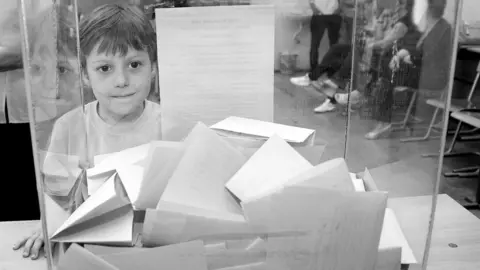 Getty Images
Getty ImagesHeld in the midst of the War of Independence, the Irish elections of 24 May 1921 were far removed from the orderly polls we enjoy today.
Violence was widespread across the island and on polling day itself in the new state of Northern Ireland, there were reports of intimidation and attacks on Catholics as they went to cast their ballots.
The elections were held to elect two new home rule (or devolved) parliaments in Ireland, one in Southern Ireland - which eventually became the Republic of Ireland - and one in Northern Ireland.
But it was not just the charged atmosphere of the time which made the polls unusual.
Here are five lesser known facts about the vote.

The two-year-old voter
Suffrage had expanded dramatically in the years before the election, with all adult men and some adult women now able to vote.
But it seems that in Northern Ireland some voters were not even old enough to attend school, never mind vote.
The Belfast Telegraph reported on a boy in Lisburn, aged two years and 10 months, who successfully cast a ballot.
James McCourt, of Longstone Street, "plumped for Mr Barbour, the only name he could utter".
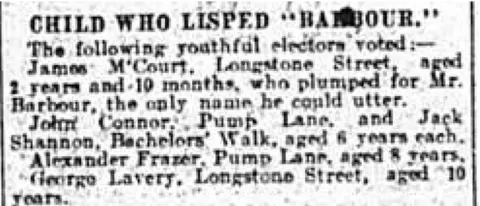 News Letter
News LetterTwo six-year-olds, an eight-year-old and a 10-year-old were also reported to have voted in the town, as well as a 13-year-old and a three-year-old in Newry.
Meanwhile the News Letter had this account of another six-year-old in Lisburn: "Master Jack Saunderson, Bachelor's Walk, sustained his claim to vote and proudly gave his six preferences for the Loyalist candidates."

The constituency with three prime ministers
There was nothing to stop people from standing in elections to both parliaments and five candidates were successful on both sides of the new border:
- Michael Collins
- Éamon de Valera
- Arthur Griffith
- Seán Milroy
- Eoin MacNeill
In Northern Ireland, de Valera was one of seven MPs elected for the constituency of Down.
Among the others were Sir James Craig and John Miller Andrews.
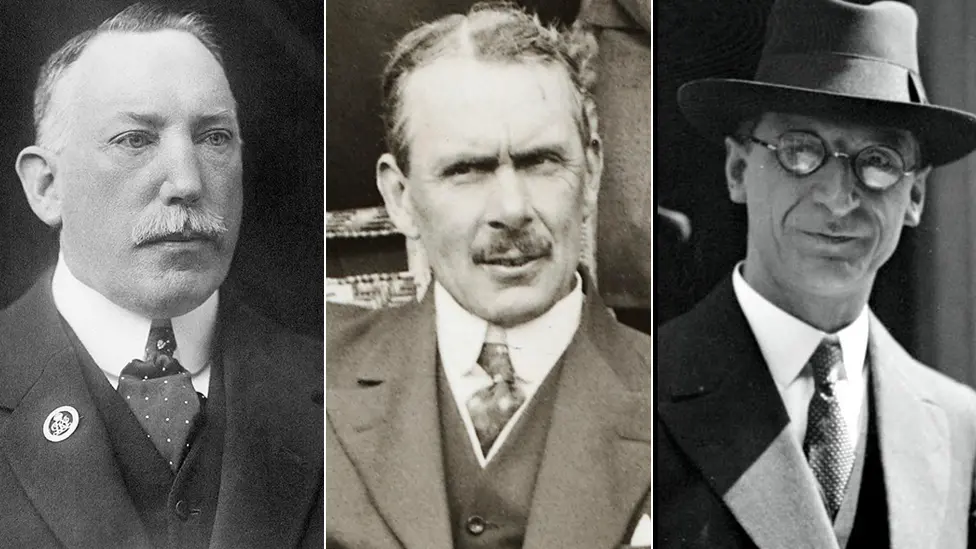 Getty Images/PA
Getty Images/PACraig would become Northern Ireland's first prime minister a month later, a position he would hold for almost two decades before being succeeded by Andrews.
Meanwhile, in 1932, de Valera would become president of the executive council of the Irish Free State - a position that later evolved into the modern role of taoiseach (Irish prime minister).
Down therefore elected three future prime ministers, while de Valera would also go on to become president of Ireland.

The parliament that never was
The Parliament of Northern Ireland first met two weeks after the election and was in existence for 51 years before it was abolished by Westminster during the spiralling violence of the early years of the Troubles.
But the Parliament of Southern Ireland's lower house (the House of Commons) only formally met once - and just four MPs turned up.
All of the 128 seats were uncontested - 124 of them returned Sinn Féin MPs and the four allocated to the University of Dublin returned unionists.
It was these four MPs who attended the meeting of the Commons on 28 June 1921. They elected a speaker and the house was adjourned, never to formally meet again.
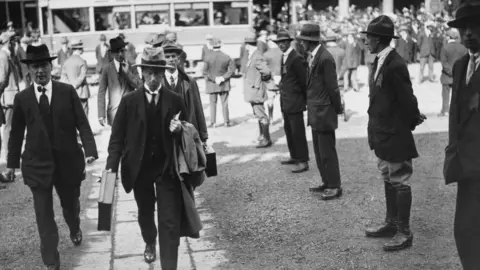 Getty Images
Getty ImagesThe upper house (the Senate) sat three times, but it was also boycotted by nationalists.
The Sinn Féin members instead assembled at the Mansion House in Dublin and formed the second Dáil.
The Parliament of Southern Ireland was officially abolished in 1922.

Voters from overseas
In 1921 the concept of an absentee ballot was a new one and was limited to servicemen overseas, so those who were living away from home had to make their way back to Ireland to vote.
There are a number of reports of this happening, including an unnamed "North Fermanagh Loyalist" whom the Belfast Telegraph reported was living in England but could not afford to travel home to vote.
Instead, he funded his passage by working as a stoker on a ship, before making contact with some friends in Belfast who transported him to Omagh.
There, the local Unionist Party quickly drove him to the village of Lack where he managed to vote shortly before the polls closed.

The goat that changed sides
In a modern election, campaigning takes many forms - from TV and social media adverts to billboards, posters and traditional door-knocking.
Candidates in 1921 were no less ingenious and in west Belfast, Sinn Féin sent a goat adorned with party bunting down the Falls Road.
According to the local press, when the goat made it to the nearby Shankill Road, locals stripped it of its republican colours, replacing them with unionist bunting.
When it returned to the Shankill, the paper reported, it was "much to the surprise of those who had not expected to have the tables so neatly turned on them".

The outcome
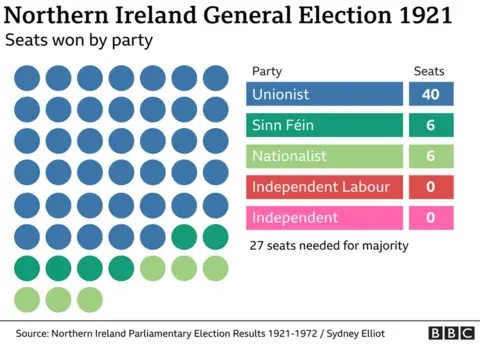
The election resulted in a landslide victory for the Unionist Party, which won 40 of the 52 seats up for grabs in the House of Commons of Northern Ireland.
Sinn Féin, which went into the poll with high hopes, won just six, the same number won by the Nationalist Party.
It was also a disappointing election for Labour, which stood four candidates but won just 0.6% of the vote.
Unionist dominance at Northern Ireland's elections would last for half a century.


The BBC News NI website has a dedicated section marking the 100th anniversary of the creation of Northern Ireland and partition of the island.
There are special reports on the major figures of the time and the events that shaped modern Ireland available at bbc.co.uk/ni100.
Year '21: You can also explore how Northern Ireland was created a hundred years ago in the company of Tara Mills and Declan Harvey.
Listen to the latest Year '21 podcast on BBC Sounds or catch-up on previous episodes.

